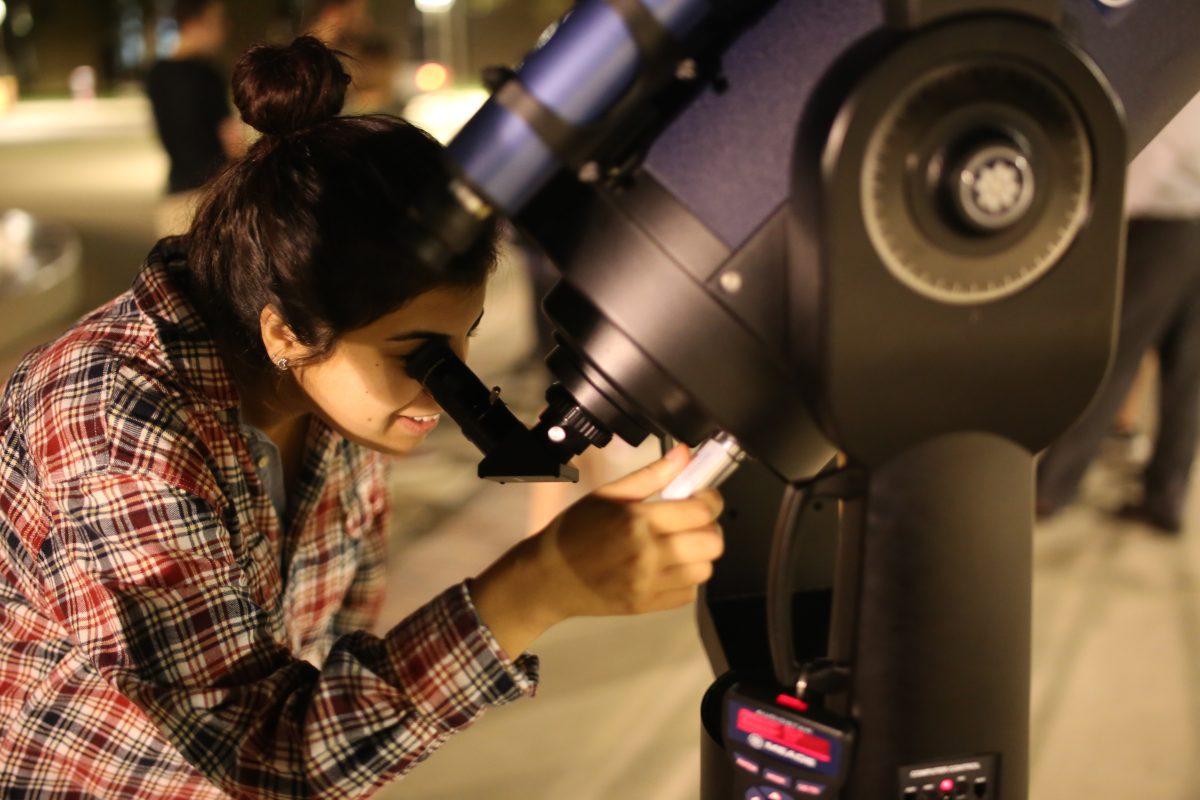My first memory of the night sky came from driving around pastures in my dad’s truck with my brother and sister; all of us had our heads hanging out the window to stare up at the stars. Despite the fact I’ve gazed at the galaxy countless times over the years, I’ve never seen the night sky quite like I did Tuesday night at the Mitchell Institute’s Star Party.
Going into this, I did not know what to expect. Sure, I wrote a preview feature on it and knew the basics of the event, but experiencing it first-hand was something else. I looked through the high-tech telescopes and saw things impossible to see with the naked eye.
The first star I saw in the telescope was Albereo. This is a binary star made up of a small blue star and a large orange star and is about 430 light years away from Earth. Looking at these two without a telescope, they appear to be a single ordinary star. Together however, they were beautiful to look at.
I next looked at the star Vega. I was informed that during this time of year, Vega is the star that is directly overhead and what astronomers use as a guide. Vega is the brightest star in the constellation Lyra and the fifth brightest star in the Texas night sky. Besides the sun, Vega is the closest star to Earth at a measly 25 light years away. Another student at the telescope told me in a few thousand years Vega will become the new North Star.
Antares was the next star I saw. Antares is a red giant, meaning it is dying. I was not able to make out the constellation Scorpio, because buildings were in the way and there was too much light pollution from the lamps around Sbisa, but I was told Antares was the heart of Scorpio.
One of the parts of the night I enjoyed most was getting to see Saturn, rings and all. It was so cool knowing that what I was seeing a planet that was 1.2 billion kilometers away. Looking up a picture of Saturn on Google is cool and all, but actually seeing it through the telescope was amazing. After peeling away from the telescope, I asked one of the people leading the party where it was in the sky, wanting to know if we could see it with the naked eye. The man pointed at what I had previously assumed was just a star. I realized I had looked at that all night and hadn’t even realized what I was seeing was actually another planet.
I finally looked at Earth’s moon near the end of the night, and it was incredible. It was just past being a full moon but it was in perigee — it was closer to the Earth than normal. When it was my turn to look through the telescope, my first thought was that the moon had crystals on it. I don’t know why I thought that because I realized it was actually craters I was looking at and the spider web of lines were from something hitting it long ago. Not wanting to leave I looked at the moon multiple times before finally heading off to study.
It was nice and calming to take time to look at the stars.There are several star parties a semester, and I encourage other students to go to one if they get a chance. It is amazing to be able to bring something that’s so far away and make it seem so close.
Gracie Mock is a communication sophomore and writer with The Battalion.


























